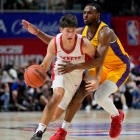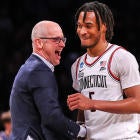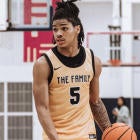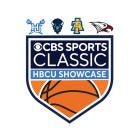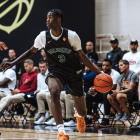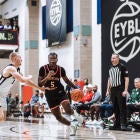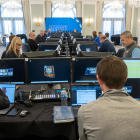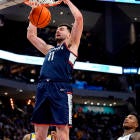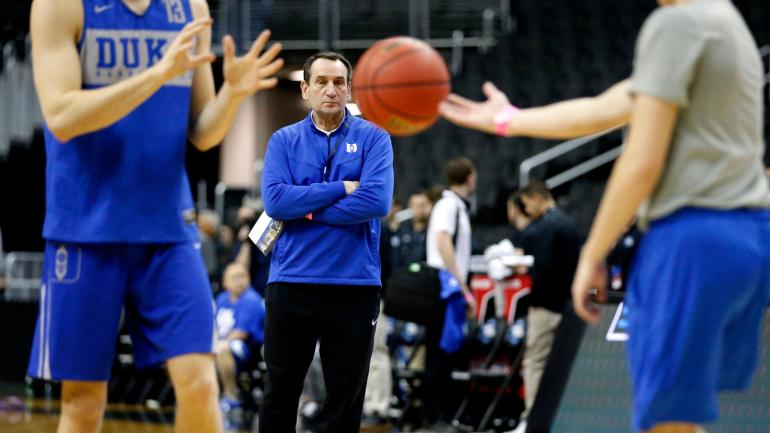
Seven months and two days after the cancellation of the 2020 NCAA Tournament, college basketball programs around the country will return to the gym Wednesday for their first official practices since that landmark day in the sport's history. Workouts being permitted to begin in July were one thing, but now coaches and players will be together with a better grasp of what's to come.
We're just six weeks away from the Nov. 25 scheduled start of the 2020-21 college basketball season. While uncertainties remain, it's clear that there will be a season. It's also clear that the COVID-19 pandemic won't be dissipating before then. So as we prepare for what figures to be an unprecedented season, here are the five top stories to watch in college basketball.
Key transfers still awaiting waivers
Oregon's LJ Figueroa, Kentucky's Olivier Sarr and Texas Tech's Mac McClung are among the group of transfers still awaiting word on whether they will be eligible for the 2020-21 season. Though several players fall into that category, the cases of those three will be watched closely during college basketball's preseason.
All three would likely be key players for teams with lofty aspirations. Sarr's case is particularly intriguing because it's actually the SEC that must make the decision, as the NCAA has already approved his waiver request. If Sarr is eligible, he will be the tallest and most-experienced player on Kentucky's roster and improve the Wildcats' ceiling considerably. It's hard to imagine the SEC denying eligibility to such an important player at its most visible program.
The outcry for allowing those three -- and all traditional transfers -- immediate eligibility will only intensify if the NCAA Division I Council approves a measure to grant all players an extra year because of the pandemic-altered season. Throw in the fact that NCAA rules are likely to change next year to allow everyone the chance to transfer once without sitting a season and you can argue it's unnecessary to enforce the sit-out rule this year.
Ravages of COVID-19
College basketball nonconference scheduling remains a disjointed mess amid the COVID-19 pandemic, which could make comparing NCAA Tournament resumes a challenge for the selection committee once the time comes. Many programs are planning to play multi-team events and participate in nonconference games, but most still have not released a final schedule yet.
Even programs that end up with full nonconference schedules will still have to contend with disruptions from COVID-19. More than two dozen college football games have been canceled or postponed so far due to the pandemic, and that's with just six conferences playing to this point.
There are 32 Division I basketball conferences, meaning we should expect an abundance of disruptions due to COVID-19 protocols. Leagues have still not announced if they will adopt player-minimum thresholds like many have in football that require teams to have a certain number of players to participate in a game.
Contact tracing could be particularly perilous in basketball, as any player participating in a practice is essentially guaranteed to spend extended amounts of time in close proximity to every other player on the team. One positive COVID-19 test could theoretically take an entire team off the court for two weeks -- and potentially four games -- unless there are scientific advancements that allow for the loosening of current contact tracing protocols.
Recruiting disruptions
With the recruiting dead period extended through Jan. 1, prospects won't be taking any official visits before college basketball's early signing period, which spans Nov. 11-18. It will be interesting to see how that affects the recruiting cycle, if at all. Many prospects take visits as juniors and may still feel comfortable signing in November. But some will want to wait until they can make official visits before signing.
This unusual recruiting cycle also included an abbreviated summer circuit that kept coaches from being able to evaluate rising seniors in-person like they normally would at summer showcase events. That could put a higher-than-usual emphasis on this high school basketball season for some seniors looking to attract Division-I attention. You can bet there will be some prospects who have flown under the radar that get late offers from quality programs this year as they show their development late in the recruiting process.
Teams that evaluate well during this unprecedented cycle could get a real leg up on the competition. On the flip side, there are likely to be some coaches who don't have the type of firm grasp they would like on the specific skills and overall ability of the prospects they sign from the class of 2021.
Five-star impact
Several of the top prospects in the 2020 recruiting class chose programs that might have missed the 2020 NCAA Tournament if there had actually been a 2020 NCAA Tournament. Will the arrival of a five-star prospect translate to immediate improvement for programs like Oklahoma State, USC, Stanford, Texas and Memphis?
The status of a few coaching tenures may depend on it.
USC will now have brothers Isaiah and Evan Mobley, both former five-star prospects, on its roster simultaneously as eighth-year coach Andy Enfield looks to make it past the first weekend of the NCAA Tournament for the first time in his tenure while also under an NCAA investigation. Stanford landed Ziaire Williams, the No. 6 overall player in the 2020 class, as it looks to make its first NCAA Tournament under fifth-year coach Jerod Haase.
Texas is hoping the addition of No. 9 overall prospect and local star Greg Brown can boost the fortunes of a program yet to make it past the first round of the Big Dance under sixth-year coach Shaka Smart. In the AAC, third-year Memphis coach Penny Hardaway will hope things go better with Moussa Cisse than they did with the Tigers' last top-10 prospect, James Wiseman, who played in just three games for the program last season before leaving school to prepare for the NBA Draft amid an NCAA suspension.
Finally, Oklahoma State landed the No. 1 overall prospect in 6-foot-6 guard Cade Cunningham. But the Cowboys will need relief through the NCAA appeals process if they are going to even be eligible for the NCAA Tournament after getting with a postseason ban for penalties stemming from an FBI investigation into a former assistant.
Awaiting NCAA word on sanctions
The Cowboys are among several programs managing the uncertainty associated with an NCAA violations case. Memphis, NC State, Kansas and LSU each have cases going through the new Independent Accountability Resolution Process that will be particularly intriguing to watch.
The IARP was created last year in response to recommendations from the Commission on College Basketball following the FBI's investigation into bribery and corruption in the sport. It aims to minimize perceived conflicts of interest in the adjudication of complicated cases. It's unclear how firm the IARP will be in its rulings as it has not yet made one. But one thing we do know is that IARP rulings cannot be appealed.
The cases in the IARP process are just the tip of the iceberg, too, as numerous other prominent programs, including Arizona, Auburn, Creighton, LSU, South Carolina, TCU and USC await the fallout from NCAA investigations. The timing of rulings from the NCAA and IARP on several cases could create some in-season upheaval.










